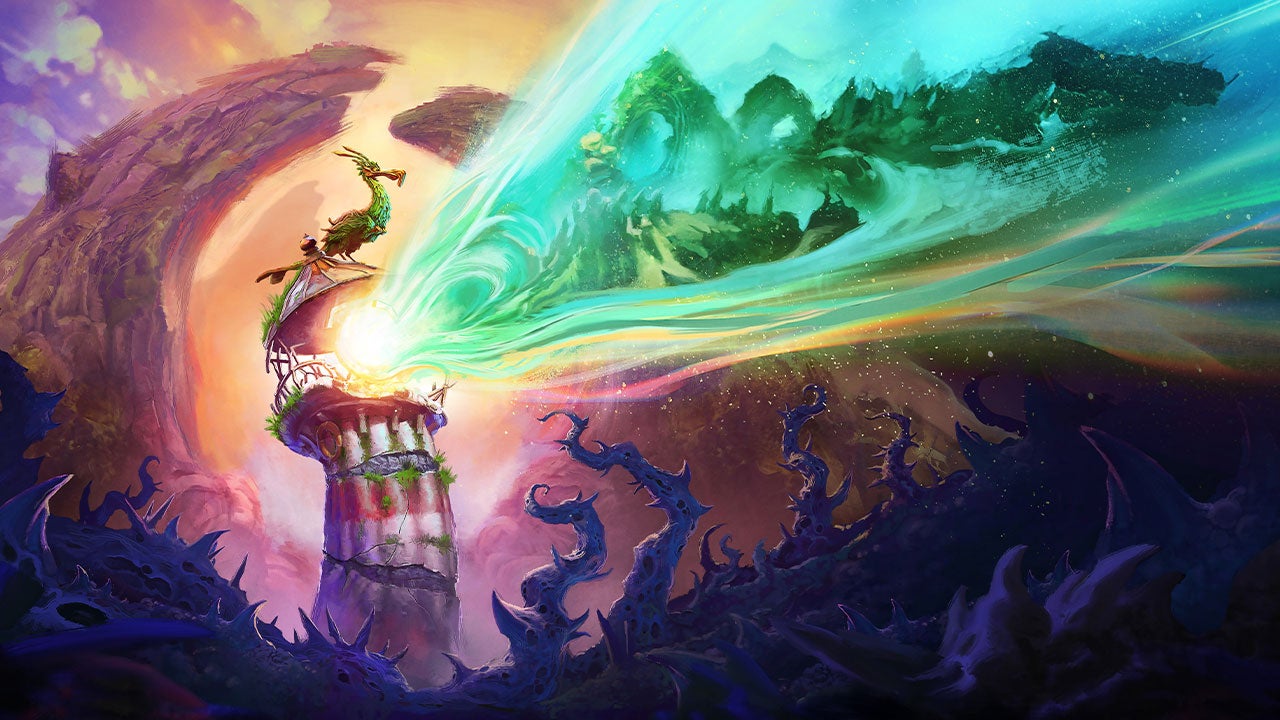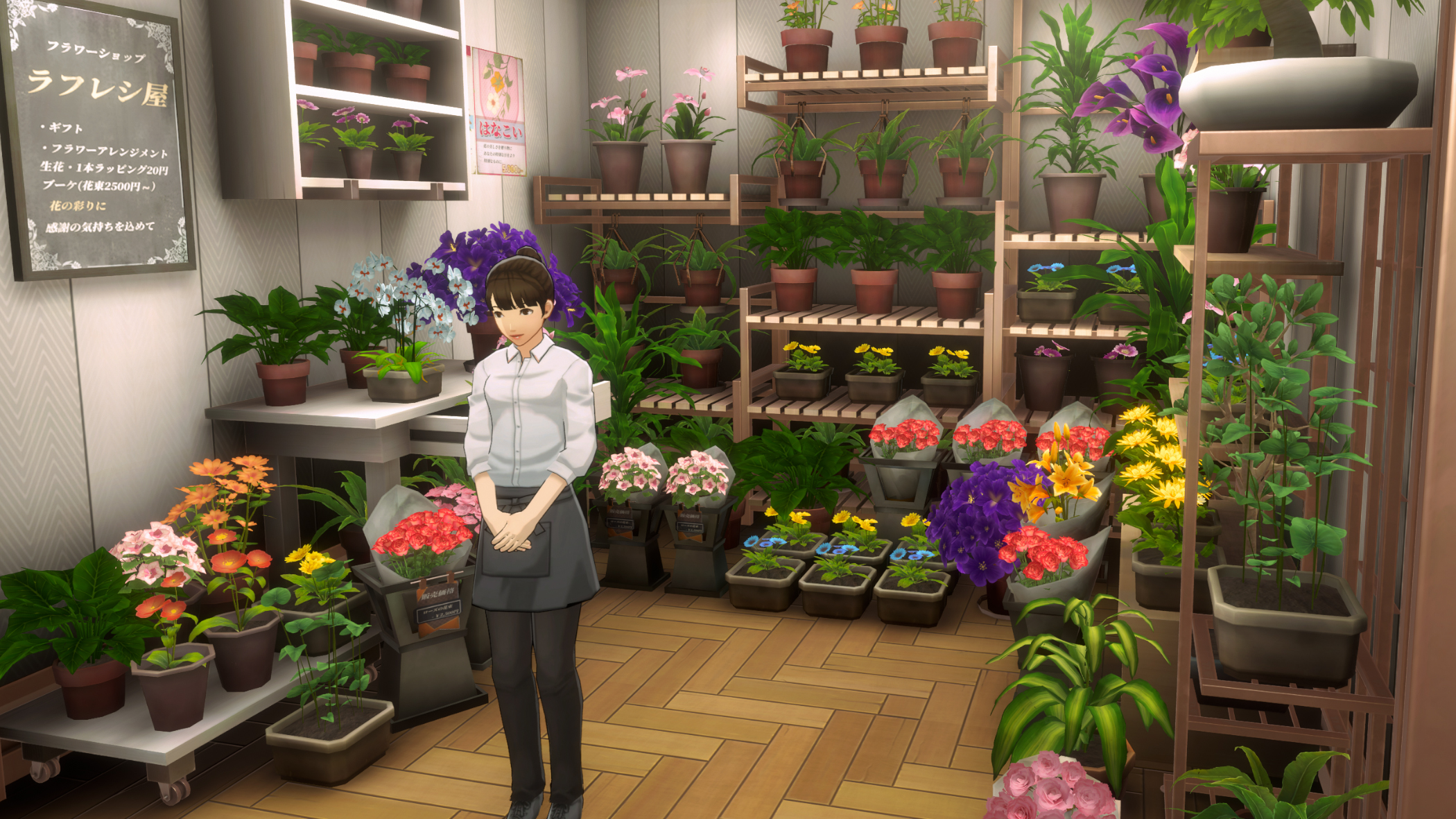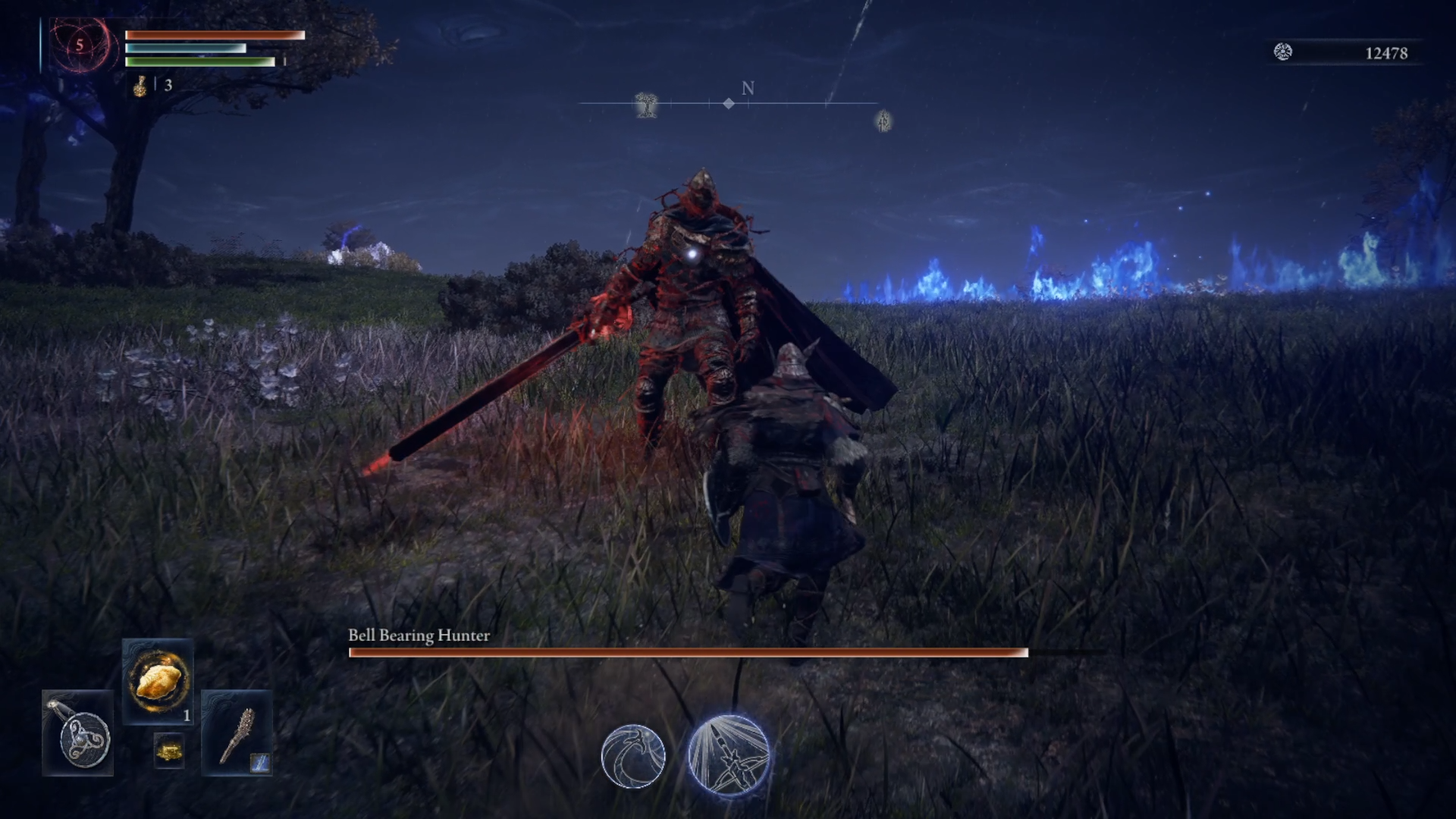
When contemplating the essence of a lighthouse (as one so often does), you might think of words like stoic, isolated, or purposeful. But have you ever thought of them as adorable, quirky, or perhaps even charming? Keeper, the atmospheric puzzle platformer from developer Double Fine, cleverly reimagines the often forgotten seaboard structure, reframing it as a lovably sentient scout on a journey through a living world. Blending a kaleidoscopic art style with nostalgic adventure game mechanics, Keeper hides an emotional story underneath all of its visual pizzazz, delivering a brain-tickling odyssey that’s stuck with me far beyond the credits.
After being separated from its flock while evading a flood of evil batlike creatures, a seabird named Twig is drawn towards a dormant lighthouse that sits on the outskirts of a mythic island. Stagnant and alone, the unexpected visitor awakens the slumbering lighthouse, causing it to shoot out a beam of warming light and scare away the evil swarm. Keeper’s story is built around the soul-stirring relationship that evolves between this unlikely duo as they fight the island’s eerie infection, navigate its curious biomes, and attempt to climb its possessed, claw-like peak. Despite there not being a single line of dialogue across Keeper’s approximately six-hour run time, I found myself wholly invested in their plight – a testament to how dynamic the pair felt in motion.
It also helps that Keeper is one of the most visually interesting games I’ve ever played. The island's topology is wavy and confusing like an ant farm, with the towering summit somehow sitting at the edge of most frames, teasing you with its proximity. Every nook and cranny of its surreal, painterly world hides vast wells of depth with craggy coral, forgotten cave structures, and vibrant twisting vines intersecting like details in a Where’s Wally book. The use of fixed camera angles in Keeper is particularly inspired and evokes a cinematic atmosphere once cultivated by games like Grim Fandango and Silent Hill.
Keeper doesn’t explicitly explain the lore behind its mythical, post-apocalyptic setting, instead relying on visual clues like crumpled houses and rewilded cityscapes to create a sense of danger and scale. It’s helpful that the environments you saunter through blend seamlessly together, too, with a change in the orchestration and colour palette alerting you to a new area or checkpoint more often than a loading screen. This HUD-less approach better allows you to lose yourself in Keeper’s spectacular landscapes, increasing your investment in the twosome and encouraging you to play around with your powers and discover tidbits of lore littered throughout.
Speaking of interacting with the world, your lighthouse powers are relatively limited but smartly utilized. You have the ability to shoot beams of light and run through obstacles to knock them down, as well as send your avian mate to pull vines or interact with levers to open doors. At first, the path forward is simple enough and involves using your light to grow vines into bridges or frighten creatures into dropping key items you need to progress. Gradually, though, Keeper increases its challenge, introducing a healthy mixture of logic and platforming puzzles that require you to weave a few interactions together in order to progress. One such puzzle involved finding and pulling a series of hidden levers to create a path through a rushing waterfall – to sniff out the levers, I needed to bound around the space and use my beam to explode fuzzy brain-like nodes, lower platforms, and grow patches of alien plants.
Not every reaction you can elicit serves a gameplay-specific purpose, though, and you can also wield these powers to impact the Seussian flora and fauna around you, using your light to make trees shift in color or shiver with life. Elsewhere, curious critters react with adorable animations along the edges of paths as you walk by. It can’t be overstated that almost every screenshot of Keeper effortlessly looks like a work of art.
While your base skills remain largely the same throughout the story, the world changes in a way that keeps things fresh. For example, your humble torch can eventually activate strange monuments that twist time forwards and backwards, briefly turning Twig into a ghost that can fly through walls and rotate cogs or an egg that can weigh down pressure plates – who says you can’t teach an old building new tricks?
If this sounds a bit surreal, that’s because it is, but somehow it all makes sense in the context of Keeper’s intriguing world. Admittedly, it helps that each new mechanic is so thoughtfully integrated into both the story and the worldbuilding at large, with Keeper peppering in subtle tutorials through a handful of unmissable interactions at the start of each new area. Similar to Cyan World’s groundbreaking puzzle game Myst, Double Fine masterfully teaches you how to solve the puzzles ahead without overexplaining them, which helps maintain a sense of momentum without leaving you totally untethered from the larger plot.
Still, there’s no rush to make it to the top of the mountain. Half the joy of Keeper is in the journey, and there are plenty of jaw-dropping sights to gawk at along the way. Each level is its own microcosm screaming with personality. You’ll visit the ethereal Pollen Fields, which are filled with cotton candy shrubs and cliff faces that look like splodges of paint someone has haphazardly run their hands through, as well as the cleverly named Horologe, a steampunk-esque city that feels architecturally Grecian. These locations are often disorienting, with brush stroke detailing and scratchy textures that reinforce the organic, handmade aesthetic. They are further bolstered by an exquisite soundtrack from composer David Earl, whose twinkling, dreamy arrangements strike a steady balance between calming and eerie, coating the world in a sense of unease.
That’s not all, though, as each area is inhabited by its own creatures, too, which range from towering multi-eyed whales to rocks with legs and narrow cylindrical dragons whose coats look like woven quilts. This smorgasbord of oddities made me feel like a kid at the aquarium, using my lighthouse torch to “tap at the glass” in search of reactions. Even with their uncanny designs, the critters all fit into Keeper’s world as if they evolved there over centuries in order to survive – a theme that bleeds into every corner of this existential story.
The themes at play aren’t overly complex, though understanding them does require you to read between the lines. As a lonely lighthouse, the ideas of evolution and isolation are touched on – but importantly, your interpretation of each conversation-less cutscene or puzzle will surely be influenced by your own experiences in a way that feels intentional. For me, Keeper came across as an exploration of friendship, adaptation, and the inimitable power of self-belief in a world that is struggling to cope under an oppressive force. Maybe it will mean something different to you. While I was occasionally left longing for more concrete answers to its questions, similar to the process of staring at a painting, this tale leaves the door open for you to find meaning in both the artist's intentions as well as your own.
I’ve always considered Double Fine the Willy Wonka of game developers, and Keeper feels like a prime example of why. It walks and talks like a fairly digestible adventure game, but there’s also a sense of experimentation and whimsy that makes it hard to put into any one box. Caught somewhere between the ‘Three Course Dinner Chewing Gum’ and a Ratatouille flashback, Keeper flooded my senses, leaving me open to contemplate its world as a standalone creation as well as a mirror of my own.















